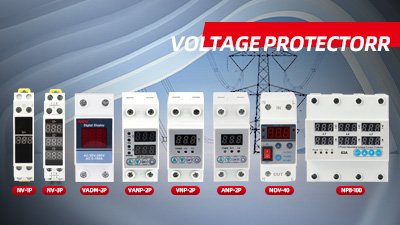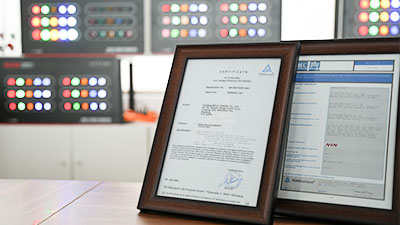Both ammeter and voltmeter are important electrical instruments. They both have similarities and differences in structure and use. The following is a detailed introduction of the digital display voltmeter.
The ammeter is also called an ampere meter. Used to measure the size of the current in the circuit. The ammeter has three terminals and two ranges; the two ranges share a "+" or "-" terminal, and the ones marked with "0.6" and "3" are positive or negative terminals. The dial of the ammeter is marked with the symbol A and the scale indicating the current value. The "0" point of the ammeter is usually at the left end. When the current in the circuit under test is zero, the pointer points to the 0 point. When there is current, the pointer deflects, and the scale pointed by the pointer after it stabilizes is the current value in the circuit under test. When using "+" or "-" and "0.6", the range is 0-0.6A, each large division is 0.2A, each small division is 0.02A; if using "+" or "-" and "3" When, the range is 0-3A, each large grid is 1A, and each small grid is 0.1A.
The ammeter should be used in series in the circuit. The internal resistance of the ammeter itself is very small, so it is absolutely not allowed to directly connect the ammeter to the two poles of the power supply without passing any electrical appliances. This will cause the current through the ammeter to be too large and burn the ammeter.
Voltmeter, also called voltmeter. Used to measure the voltage in the circuit, the voltmeter also has three binding posts, one negative binding post and two positive binding posts. Students’ voltmeters generally have two positive terminals: 3V and 15V. When the measurement range is selected as “15V” according to the voltage, each large grid on the dial represents 5V, and each small grid represents 0.5V (that is, the minimum score). The degree value is 0.5V); when the range is "3V", each large grid on the dial represents lV, and each small grid represents 0.1V (that is, the minimum graduation value is 0.1V).
The voltmeter should be used in parallel in the circuit, and the voltage at both ends of which consumer is measured in parallel with which consumer; unlike ammeter, the voltmeter can be directly connected to the two poles of the power supply without any consumer. At this time, the measured value Is the power supply voltage.
The steps of using ammeter and voltmeter are basically the same, and they are divided into four steps: adjustment, selection, connection, and reading:
Adjust-adjust the pointer of the watch to the "zero scale" position before use.
Selection—Select the appropriate range according to the actual situation of the circuit. Without knowing the actual current or voltage, the "test touch" method can be used to determine whether the range is exceeded. Note that when the test touch is made, it must be connected to a large range of terminals, and the action will be rapid when the test touch is made.
Connecting-Connect the meter to the circuit correctly according to the respective connection methods of the ammeter and voltmeter. At the same time, pay attention to the relationship between the positive and negative terminals of the meter and the current flow. It must be ensured that the current flows in from the positive terminal of the meter and from the negative terminal Outflow. Digital display voltmeter
Reading-correctly read the value indicated by the pointer of the meter, and be sure to pay attention to the selected range and its corresponding minimum scale value when reading.





 Dec 30, 2022
Dec 30, 2022



